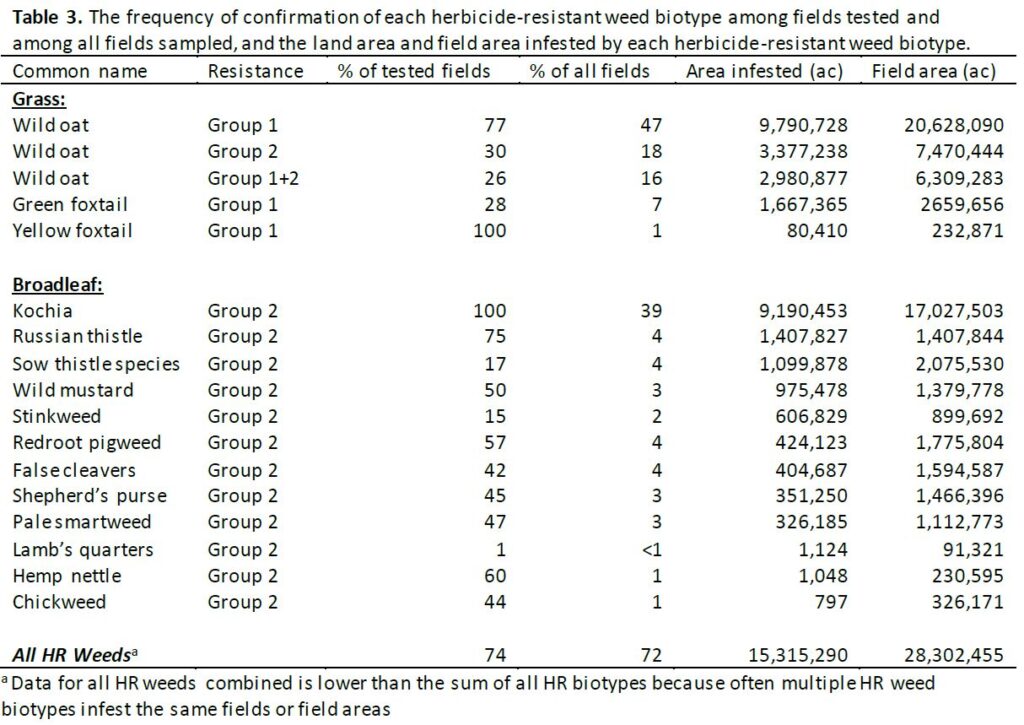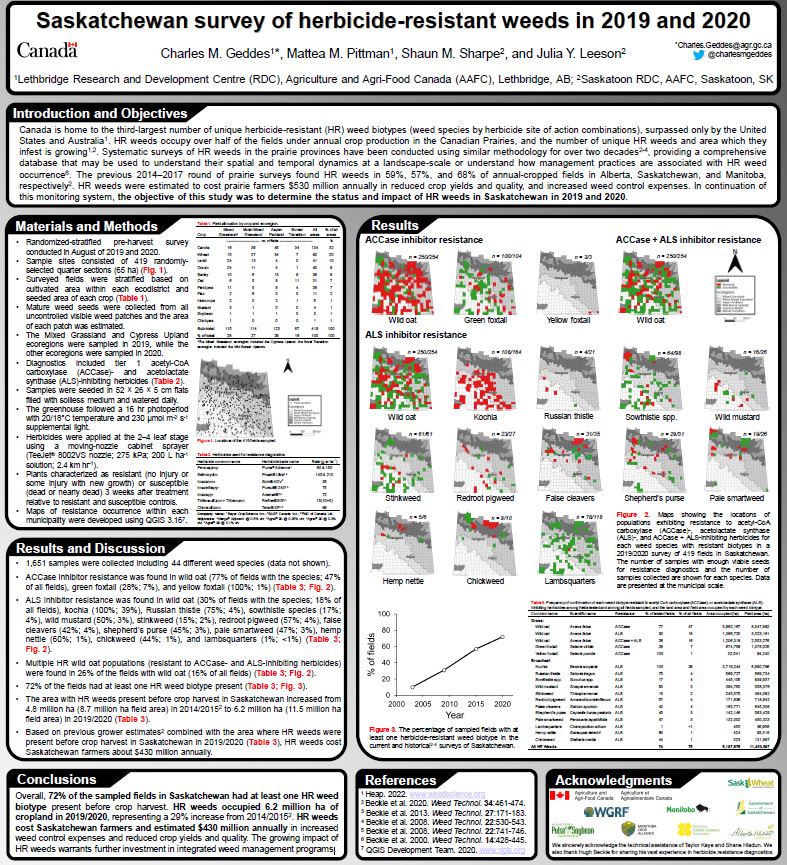Key Result
This project is still in progress, but it aims to maintain the methods used in previous surveys, increase surveillance efforts for new herbicide-resistant (HR) weeds, and build a HR weed biovigilance strategy for the Canadian Prairies.
Project Summary
Overview
Herbicide-resistant (HR) weeds are a significant challenge in Canada, so there is a need for continued surveillance and immediate action to mitigate or delay the selection for new HR weeds.
This project, led by Charles Geddes, will use a series of Prairie Herbicide-Resistant Weed Surveys and a coordinated strategy for biovigilance of HR weeds in the Prairie Region of Canada to increase awareness of HR weeds, guide the priorities of agricultural industry, and help growers understand how to mitigate and manage HR weeds on their farms.
Progress
The Saskatchewan survey of herbicide-resistant weeds in 2019/2020 covered 1651 weed samples from 419 fields under annual crop production. The Mixed Grassland ecoregion was sampled in 2019 (115 fields), while the Moist Mixed Grassland, Aspen Parkland, and Boreal Transition ecoregions were sampled in 2020 (114, 123, and 67 fields, respectively). The survey followed a randomized-stratified design with crops sampled proportional to their production area and fields sampled proportional to the arable land base within each ecodistrict.
Resistance diagnostics identified group 1 resistance in wild oat, green foxtail, and yellow foxtail, group 2 resistance in wild oat, kochia, sow thistle species, wild mustard, stinkweed, redroot pigweed, false cleavers, shepherd’s purse, pale smartweed, lamb’s quarters, hemp nettle, and chickweed, and group 1+2 resistance in wild oat. Overall, the area infested with herbicide-resistant weeds in Saskatchewan increased from 11.8 M acres (a 21.5 M acre field area) in 2014/2015 to 15.3 M acres (a 28.3 M acre field area) in 2019/2020.
Although the project is still in progress, these results suggest that 72% of Saskatchewan fields under annual crop production were infested with at least one herbicide-resistant weed biotype. The 36 grower-submitted samples with suspected novel herbicide resistance received in 2021 are currently being tested for resistance. Of particular concern arising from these samples was the first confirmation of glyphosate-resistant downy brome in Taber County, Alberta. Overall, the project continues to document (unfortunately for Prairie farmers) the increasing impact of herbicide-resistant weeds on annual crop production in the Canadian Prairies.
Interim conclusions
Although based on preliminary results, herbicide-resistant weeds infest about 15.3 million acres of farmland under annual crop production in Saskatchewan; equivalent to 28.3 million acres based on field area. The 2019/2020 survey of Saskatchewan identified group 1 resistance in wild oat, green foxtail, and yellow foxtail, group 2 resistance in wild oat, kochia, sow thistle species, wild mustard, stinkweed, redroot pigweed, false cleavers, shepherd’s purse, pale smartweed, lamb’s quarters, hemp nettle, and chickweed, and group 1+2 resistance in wild oat.
It is estimated that herbicide-resistant weeds cost Saskatchewan farmers about $430 million annually in increased costs of weed control and decreased crop yields and quality. Of particular concern was the first confirmation of glyphosate-resistant downy brome in a grower-submitted sample from Taber County, Alberta. This represents the first glyphosate-resistant grass weed identified in Canada.
Read the First report of glyphosate-resistant downy brome (Bromus tectorum L.) in Canada for more information.







